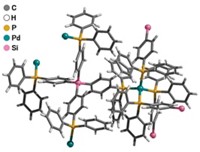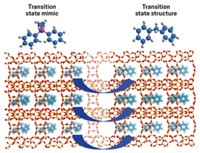Advertisement
Grab your lab coat. Let's get started
Welcome!
Welcome!
Create an account below to get 6 C&EN articles per month, receive newsletters and more - all free.
It seems this is your first time logging in online. Please enter the following information to continue.
As an ACS member you automatically get access to this site. All we need is few more details to create your reading experience.
Not you? Sign in with a different account.
Not you? Sign in with a different account.
ERROR 1
ERROR 1
ERROR 2
ERROR 2
ERROR 2
ERROR 2
ERROR 2
Password and Confirm password must match.
If you have an ACS member number, please enter it here so we can link this account to your membership. (optional)
ERROR 2
ACS values your privacy. By submitting your information, you are gaining access to C&EN and subscribing to our weekly newsletter. We use the information you provide to make your reading experience better, and we will never sell your data to third party members.
Materials
Building Boggsite
Phosphazenes help guide the formation of pores and channels for synthesizing the rare zeolite mineral
by Bethany Halford
November 29, 2010
| A version of this story appeared in
Volume 88, Issue 48
By employing phosphazenes to guide the formation of pores and channels, chemists in Spain have developed a novel synthesis of zeolites, including the rare mineral boggsite (Science, DOI: 10.1126/science.1196240). With a unique aluminosilicate structure composed of intersecting channels of 10- and 12-membered rings, boggsite is a promising catalyst for industrial reactions. But the material is found only in meager quantities in Oregon and Antarctica, and attempts to synthesize boggsite have proven unsuccessful, until now. A team led by Avelino Corma of Polytechnic University of Valencia found that phosphazenes—substituted phosphorus-nitrogen oligomers—make excellent organic structure-directing agents in the synthesis of zeolites, including boggsite. The compounds are easy to prepare and possess “a nearly unlimited synthesis flexibility that is based on building-block units,” the researchers say. The zeolite structure can be tuned by simply changing the phosphazenes’ substituents.





Join the conversation
Contact the reporter
Submit a Letter to the Editor for publication
Engage with us on Twitter